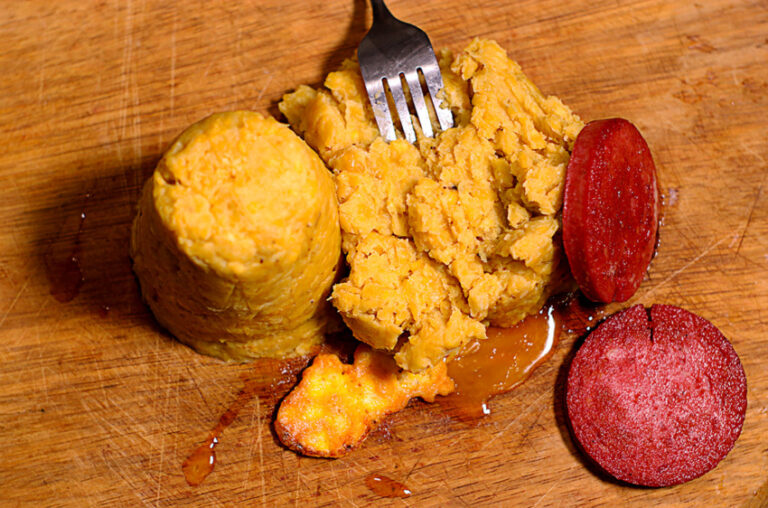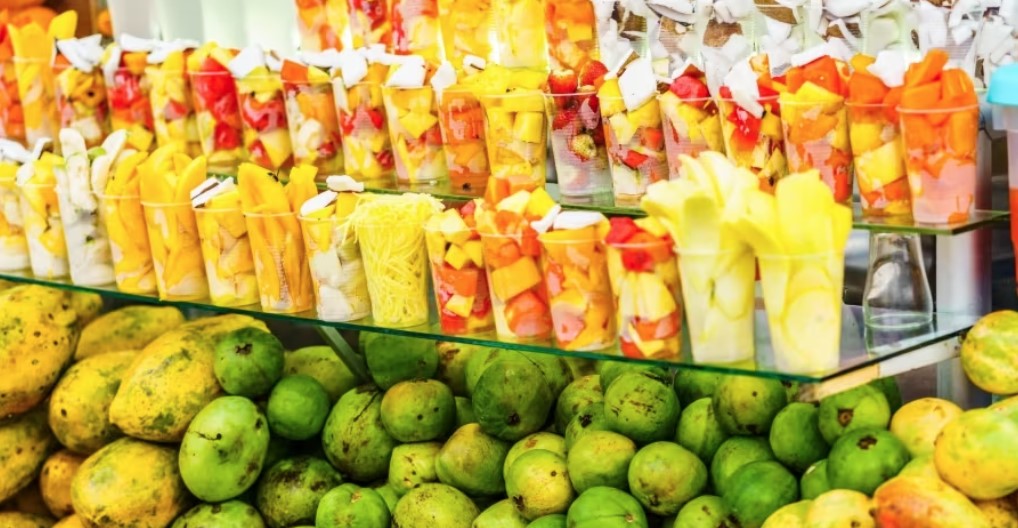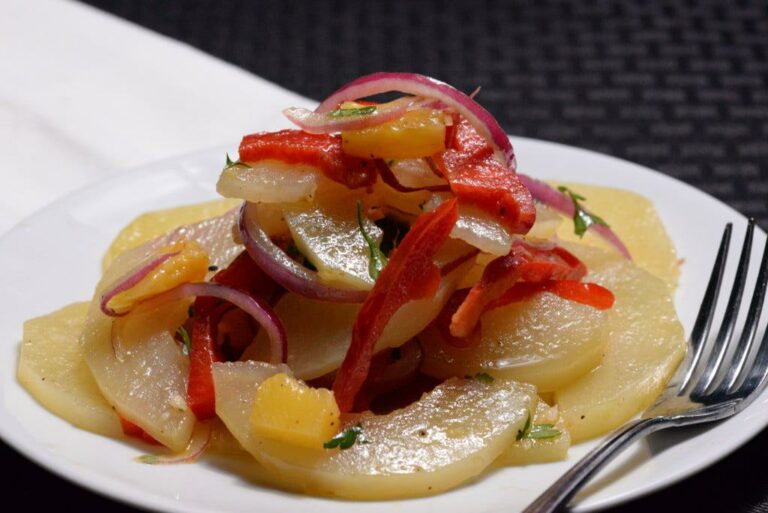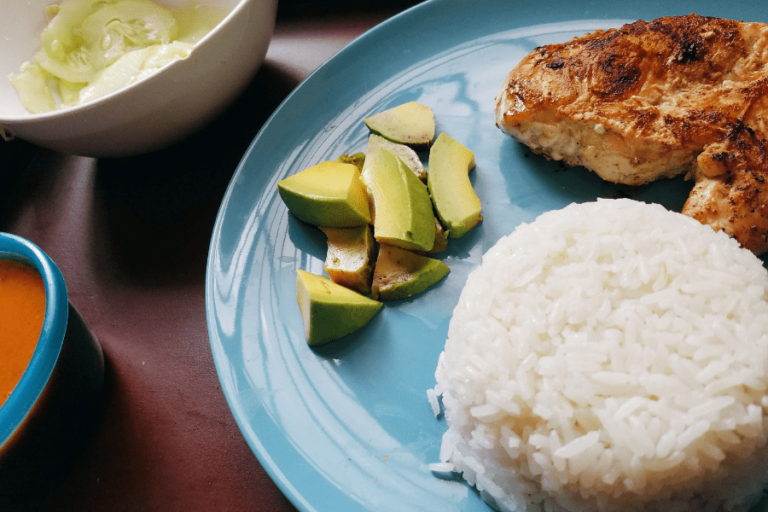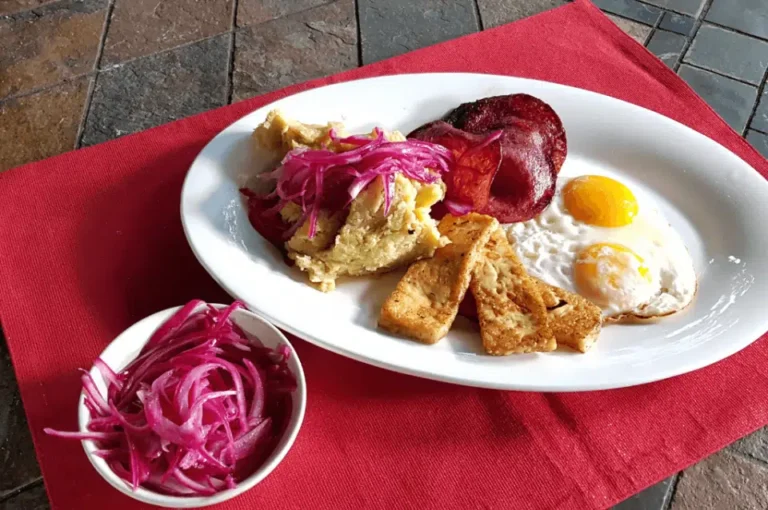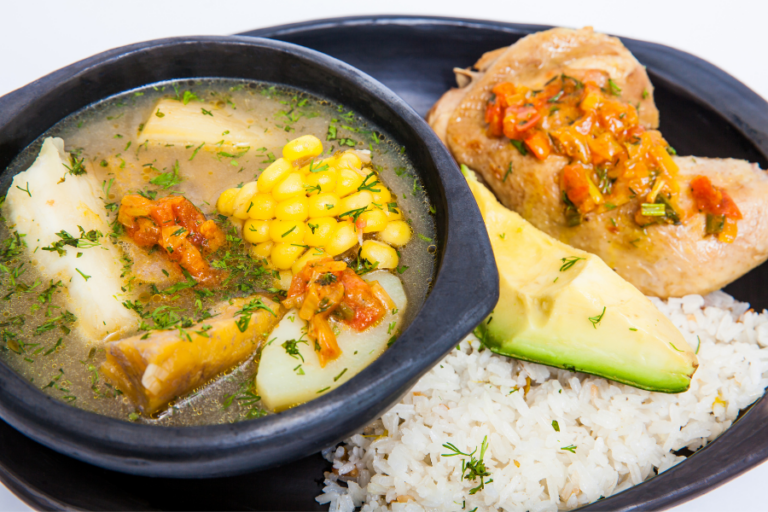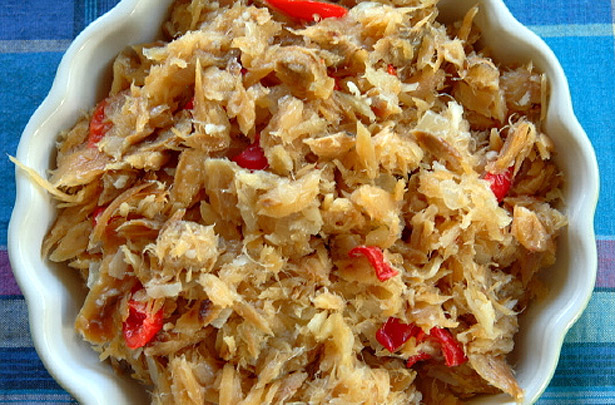Tourists, vacationing in hotels of the Dominican Republic on the All Inclusive system, are sometimes offered dishes of the Dominican cuisine. But real national food, as elsewhere, is served in local restaurants (Comederia), where Dominicans dine.
To choose the right Dominican restaurant, pay attention to how crowded it is. It tastes better where there are more local visitors!
But first, let’s find out: what and when do Dominicans eat?
DOMINICAN CUISINE

After tasting the real Dominican cuisine, you may notice that it is based on a combination of different types of meat with the obligatory addition of rice and legumes, as well as bananas and local vegetables. It is also flavored with local herbs, which add a unique flavor and aroma to each dish.
BREAKFAST
The day starts with a fairly hearty breakfast. Usually, it is scrambled eggs with slices of ham, and mangu – mashed vegetable bananas or boiled sweet potatoes, seasoned with herbs, onions, cheese, and pieces of meat. And the breakfast ends with coffee with a lot of sugar. Also for breakfast, Dominicans often eat pieces of cheese fried in butter, which literally melt in the mouth.
DINNER
For lunch, Dominicans usually eat chicken with rice, or Sancocho – a stew of meat with rice and stews.
In general, rice and meat are the most common foods on the Dominican dinner table. There are many ways to cook rice and many more ways to cook meat. Rice is always served with bean gravy and vegetable salads made from avocado, tayota, yucca, and other local exotic vegetables.
DINNER
Family Dominicans usually dine at home. Most often, they eat the same for dinner as for lunch, only smaller portions.
DOMINICAN CUISINE GUIDE

If you decide to try some authentic Dominican cuisine, be sure to read our small guide to local food. We will indicate the Spanish name and the main ingredients of each dish to make it easier for you to navigate the menu.
SOUPS
Sancocho
This extremely thick stew is made up mostly of meat, chicken, or fish. An essential ingredient in sancocho is a piece of young corn on the cob.
In fact, in such a soup they put almost everything edible that was found in the kitchen. That is, pork sausage and bacon, as well as lime, garlic, cassava, yams can be in sancocho. In some ways, this soup may resemble our hodgepodge.
Asopao de Mariscos
Seafood soup with rice. Fish lovers should definitely try this slightly strange but very tasty soup.
DISHES WITH VARIOUS MEAT AND Poultry

La Bandera
Translated into English, the name of this dish means “flag”. The dish is quite simple and consists of red beans, rice, and meat (the color of the Dominican flag) with the addition of fried bananas and vegetables. Dominicans eat it for lunch and dinner. Typically, La Bandera is served with salad or crispy fried bananas.
Mofongo
Another dish definitely worth trying for lovers of culinary tourism. A real mofongo consists of several layers interlaced with leaves. Each layer contains different ingredients. This is usually fried mashed banana, bacon, or other meats.
There is a simplified version of mofongo, where mashed banana is simply mixed with chunks of meat and vegetables, as well as garlic, olive oil, and Chicharones (fried pork or chicken rind). There is also a recipe for shrimp mofongo.
Outwardly, the mofongo looks like pyramids in children’s sandboxes. It looks strange, but if you see such a pyramid, be sure to try it.
Let’s list a few more famous dishes of Dominican cuisine:
- Arepitas de Maiz – cornmeal pancakes;
- Camarones al ajillo – shrimp with garlic;
- Cangrejo con coco – crab in coconut sauce;
- Chivo guisado – stewed goat meat;
- Chivo a la Diabla – stewed goat meat garnished with yucca root vegetable;
- Chuletas – smoked and then grilled pork chops;
- Croquetas de Pollo – chicken meatballs;
- Lechon asado – roast pork;
- Mangu – banana puree sprinkled with fried onions. It can be served with scrambled eggs, salami, and grilled white cheese;
- Moro – rice with black beans. Sometimes the beans are stewed in coconut milk beforehand;
- Pica Pollo – breaded fried chicken;
- Puerco asado – vegetable stew with meat;
- Servisio – this delicious and unusual dish consists of meat and vegetables baked in banana leaves;
- Queso frito – fried white cheese;
- Chicharrones de Pollo – small pieces of fried chicken.
SEAFOOD
They are prepared to keep the appearance of the product as much as possible. Fish, crabs, lobsters, mussels are boiled or baked whole on the grill, or fried, sprinkled with coconut. The main feature of seafood food is the variety of sauces.
Pescado con Coco is a delicious fish dish cooked in coconut sauce.
SIDE DISHES

Almost all dishes in the Dominican Republic are served with boiled rice or Tostones – fried bananas. Beans and local vegetables are also often served as a side dish.
Platano bananas, from which tostones are made, are larger than regular bananas and are not sweet at all. They are cut into slices, about a centimeter thick, and fried in a pan with a little oil. The outside of the toston has a thin fried crust, but inside it is soft and tender.
DESSERTS
For desserts, try sweet bean cream, fruit-filled cake (usually pineapple), rice pudding, coconut cookies, and coconut ice cream.
But there are also a few Dominican goodies, for example:
“Dulches-con-Coco” – coconut flakes with molasses;
“Dulches-con-Leche” – a mixture of milk with molasses;
“Dulches-de-Naranja” – orange pulp jam with molasses;
“Coco-Nueve-Con-Leche” – coconut pulp jam with milk.
FRUITS
The best Dominican dessert is, of course, fruit. They are always ripe here because they ripen throughout the year. The most delicious fruits, but, unfortunately, not suitable for any long-term storage and transportation, can be bought from farmers or from roadside traders.
It is worth mentioning some of the local fruits, some of which you probably know.
Pineapples, which are called pignas in the Dominican Republic, are tasty and juicy here. They are recommended to everyone who wants to lose weight. To do this, they should be eaten on an empty stomach.
More than 40 varieties of mango grow in the Dominican Republic. However, if you want to taste different fruits, you have to come here from April to September.
There are many types of bananas here. There are the usual yellow ones, there are red ones, there are bananas for frying and many others. Dominicans add them to all dishes, even meat or chicken. It turns out delicious – if you know which banana to add where.
Avocado is also worth trying. The fruits here are large and melt in the mouth.
Papaya, or lechosa, locally, is a fruit that you can eat just like that, either grind it in a smoothie drink or add in pieces, say, to your morning oatmeal.
Pitahaya are large reddish fruits with edible flesh inside. The fruit is cut open and eaten with a spoon. They are especially recommended for people with a sick stomach or diabetes mellitus.
Chinola (passion fruit) is an incredibly healthy fruit that grows on a liana. It is quite acidic, so it is best to eat it by cutting off the top and adding a spoonful of honey. Chinola is added for flavor and aroma to the local ice cream, as well as juices.
Sapote is a large brown fruit with suede skin. Inside there is a large varnished bone and pulp that looks like orange cream. It tastes like both sweet pumpkin and boiled carrots.
Mamon. This fruit grows in the mountains, so it is quite rare and expensive. It is advised to use it, having previously held it in the freezer.
Granadilla is a sour pulp with seeds inside. Most often used for making juice.
Guanabana or creamy apple is a large and prickly green fruit. Inside – white pulp with seeds. It quenches thirst and helps with many diseases.
Jagua is used to extract the juice.
Nispero is a medlar. The whole fruit consists of pulp.
DRINKS
Food in the Dominican Republic is usually accompanied by a glass of ice water and ends with a cup of aromatic coffee.
Rum is popular among alcoholic beverages. In the Dominican Republic, many different types of rum are produced: dark, light, aged, with various additives. In its pure form, rum is drunk in small portions, but more often it is diluted or used in cocktails.
There are almost no own wines in the Dominican Republic, but good beer is brewed here. The main varieties are Presidente, Bohemia, Quiskeia, and Seniza.
Sometimes locals prefer the Malta Morena drink. Despite the similar ingredients to beer, it is a sweet non-alcoholic beverage. It can be mixed with condensed milk for a creamy flavor.
From soft drinks, Dominicans drink orange juice, coconut milk, fruit drinks. Sugar is often added to freshly squeezed juices.

